Hello 👋 My name is Cherie and I’m one of Trinity Botanic Garden’s 2024 summer interns!
The first week went by quickly, with everyone preparing for the upcoming garden open day event run by the Rathmines Initiative. We immediately got our hands dirty with weeding, pruning and decorating with potted plants to fill the space up; all of which got us very familiar with the garden and its content very quickly. During this I especially loved keeping an eye out for all the life in the garden supports. Many robins kept us company as we cleared away bluebells and garlic in the Arboretum. One brave soul was even nice enough to pose for a photo underneath Quercus frainetto, or Hungarian oak, a tree native to southeastern parts of Europe such as Turkey.
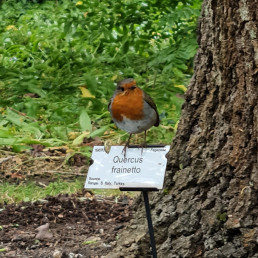
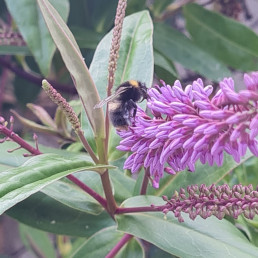
And, of course, I can’t talk about life in the garden without mentioning the three resident cats 🐈⬛️
Fluffy, the oldest, has been the most receptive to head pats and chin scratches, and has even stopped me to ask for some a few times during my trips to the shed (I was honoured and did so immediately). Brody remains elusive, and Missy too has been a bit evasive outside of feeding time, but I do hope they’ll eventually warm up to us…
Clearing the beds by the glasshouses was done in the presence of many bees and other pollinators.
One plant they seemed to enjoy in particular was a species of Hebe, belonging to the genus Veronica. The group name comes from the Greek goddess Hebe which I found to be amusingly fitting; according to mythology Hebe, a cupbearer, would pour the Gods nectar much like the Hebe flowers give nectar to the bees!.
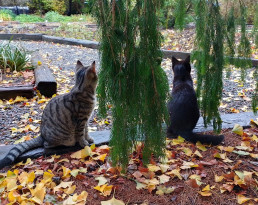
Brody and Missy under the weeping spruce

Week 2 brought cooler temperatures and bouts of rain, meaning more indoor jobs.
The potting shed might be my favourite space in the whole garden; maybe a shocking thing to say with all the amazing plants in the glasshouses and the lovely outdoor spaces, but there’s something about being surrounded by pots and getting my hands dirty at the work bench I find to be quite cozy!
I got a close look at a common pest called a vine weevil while repotting a Saxifraga hostii; a single larva can do significant damage to a plant’s roots, while mature adults are more inclined to chomp on leaves. They’re quite a big fan of the saxifrage family, particularly here in Ireland and, while I thought it was quite cute (I’m a big bug fan ✌️), it unfortunately had to go…
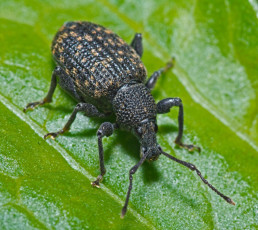
Adult vine weevil – the adult munches on leaf edges leaving characteristic semi-circular notches, indicating the presence of the weevil and likely its larvae in the roots!

Indicative notching on primula leaves
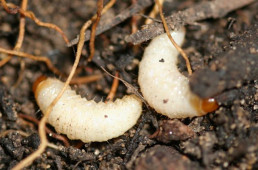
Larvae – these are responsible for eating through plant roots, eventually killing it
With more chances to explore the glasshouses this week, I got more time to take a closer look at all the plants inside:
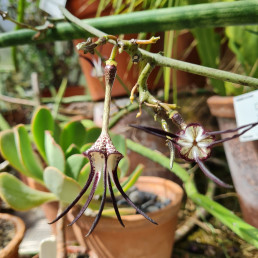
A lovely flower pointed out to us in the Cycad House was that of Ceropegia stapeliiformis, a South African succulent trailing so long you might not be able to tell at first exactly which pot it’s growing out of!
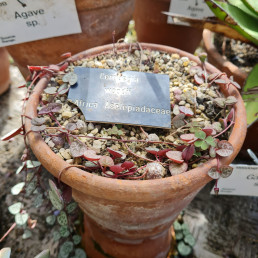
It was very interesting to see the diverse morphology within the Ceropegia genus clearly on display here at the garden. One I was surprised to see was a popular houseplant commonly called String of Hearts, C. woodii, which I had not even known was a succulent!
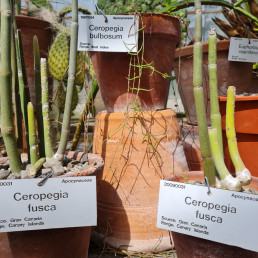
It’s so different from C. stapeliiformis’ sturdier appearance, or the standing stems of C. fusca (above), that you might not even guess they all belong to the same genus.

